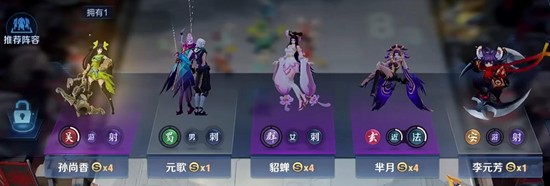On PHP 5.3, Lambda Functions, and Closures
时间:2009-04-20 来源:cobrawgl
PHP 5.3 will have a lot of exciting new features. One of the most important one for me is the introduction of lambda functions and closures support. I won't talk too much about what lambda functions or closures are, as you can find many good blog posts describing them in great details. To sum up, a lambda function is an anonymous PHP function that can be stored in a variable and passed as an argument to other functions or methods. A closure is a lambda function that is aware of its surrounding context.
The first obvious use for lambda functions and closures is in conjunction with the array_map(), array_reduce(), and array_filter() native PHP functions:
$input = array(1, 2, 3, 4, 5); $output = array_filter($input, function ($v) { return $v > 2; });
The above example filters the input array by removing all values greater than 2:
$output == array(2 => 3, 3 => 4, 4 => 5)
function ($v) { return $v > 2; } is the lambda function definition and it can be stored in a PHP variable to be reusable:
$max_comparator = function ($v) { return $v > 2; }; $input = array(1, 2, 3, 4, 5); $output = array_filter($input, $max_comparator);
But what if I want to change the maximum number allowed in the filtered array? I can either create another lambda function or use a closure:
$max_comparator = function ($max) { return function ($v) use ($max) { return $v > $max; }; }; $input = array(1, 2, 3, 4, 5); $output = array_filter($input, $max_comparator(2));
Now, the $max_comparator function takes the maximum allowed number and returns a function that is different according to this maximum. Even for such a contrived example, I hope you see the great power it gives you!
Closures also opens up a lot of great possibilities, like the implementation of the cryptic Y-combinator, as demonstrated by Stanislav Malyshev in one of his recent blog post:
function Y($F) { $func = function ($f) { return $f($f); }; return $func(function ($f) use($F) { return $F(function ($x) use($f) { $ff = $f($f); return $ff($x); }); }); }
Today, I want to talk about yet great another example on how to use lambda functions and closures. You will see that it can simplify your code a lot when used appropriately.
If you have read my blog recently, you know that I am quite obsessed with dependency injection these days. This post will show you how to implement a very simple but still full-featured dependency injection container, thanks to the new features of PHP 5.3.
A dependency injection container must be able to manage two different kind of data: objects and parameters. And objects must be created on-demand the first time they are accessed from the container.
Using a simple class that implements the magic __get() and __set() methods, we can easily manage both the objects and the parameters:
class DIContainer { protected $values = array(); function __set($id, $value) { $this->values[$id] = $value; } function __get($id) { return is_callable($this->values[$id]) ? $this->values[$id]($this) : $this->values[$id]; } }
Using the container is quite simple:
$container = new DIContainer(); // define the parameters $container->cookie_name = 'SESSION_ID'; $container->storage_class = 'SessionStorage'; // defined the objects $container->storage = function ($c) { return new $c->storage_class($c->cookie_name); }; $container->user = function ($c) { return new User($c->storage); }; // get the user object $user = $container->user; // the above call is roughly equivalent to the following code: // $storage = new SessionStorage('SESSION_ID'); // $user = new User($storage);
The examples I use in this article are the same as the one I have used in my series on dependency injection.
The definition of an object is done by defining a lambda function that returns an instance of the object.
The __get() method checks if the value associated with a key is a PHP callable (and lambda functions are callables) to make the difference between an object definition and a parameter.
Also notice how we call the lambda:
$this->values[$id]($this)
The trick here is to pass the container as an argument of the lambda function so that it can use the container to access parameters and other objects managed by the container.
We can make the container a bit better by adding error support:
class DIContainer { protected $values = array(); function __set($id, $value) { $this->values[$id] = $value; } function __get($id) { if (!isset($this->values[$id])) { throw new InvalidArgumentException(sprintf('Value "%s" is not defined.', $id)); } return is_callable($this->values[$id]) ? $this->values[$id]($this) : $this->values[$id]; } }
Defining objects with lambda functions is great because the developer can do whatever he wants to actually create and configure instances. But we still need to implement one important feature of any dependency injection container: shared instances. This can be done manually like this:
$container->user = function ($c) { static $object; if (is_null($object)) { $object = new User($c->storage); } return $object; };
By declaring a static variable in the lambda function, the first time it is called, the object is created and returned. For all subsequent calls, the same instance will always be returned.
It works as expected, but this is quite repetitive, tedious, and error prone. For all instances that must be unique, we need to add this boilerplate code. Instead, I want to support shared instances as a native feature of the container itself. Thanks to closures, that's quite easy to accomplish:
class DIContainer { // ... function asShared($callable) { return function ($c) use ($callable) { static $object; if (is_null($object)) { $object = $callable($c); } return $object; }; } }
The asShared() method wraps the given lambda function to add the needed logic we have seen before. Declaring an object as unique for a given container is now dead simple:
$c->user = $c->asShared(function ($c) { return new User($c->storage); });
In less than 30 lines of PHP, we have coded a full-featured dependency injection container. Quite impressive!
If we remove the need for shared instance, and if we define parameters and objects as lambdas, we can even compact the code so that it fits in a tweet:
class Container { protected $s=array(); function __set($k, $c) { $this->s[$k]=$c; } function __get($k) { return $this->s[$k]($this); } }
I have called this tweet container twittee, and it has its own dedicated website and github repository.
PHP 5.3 is really a great step forward for the PHP language.










